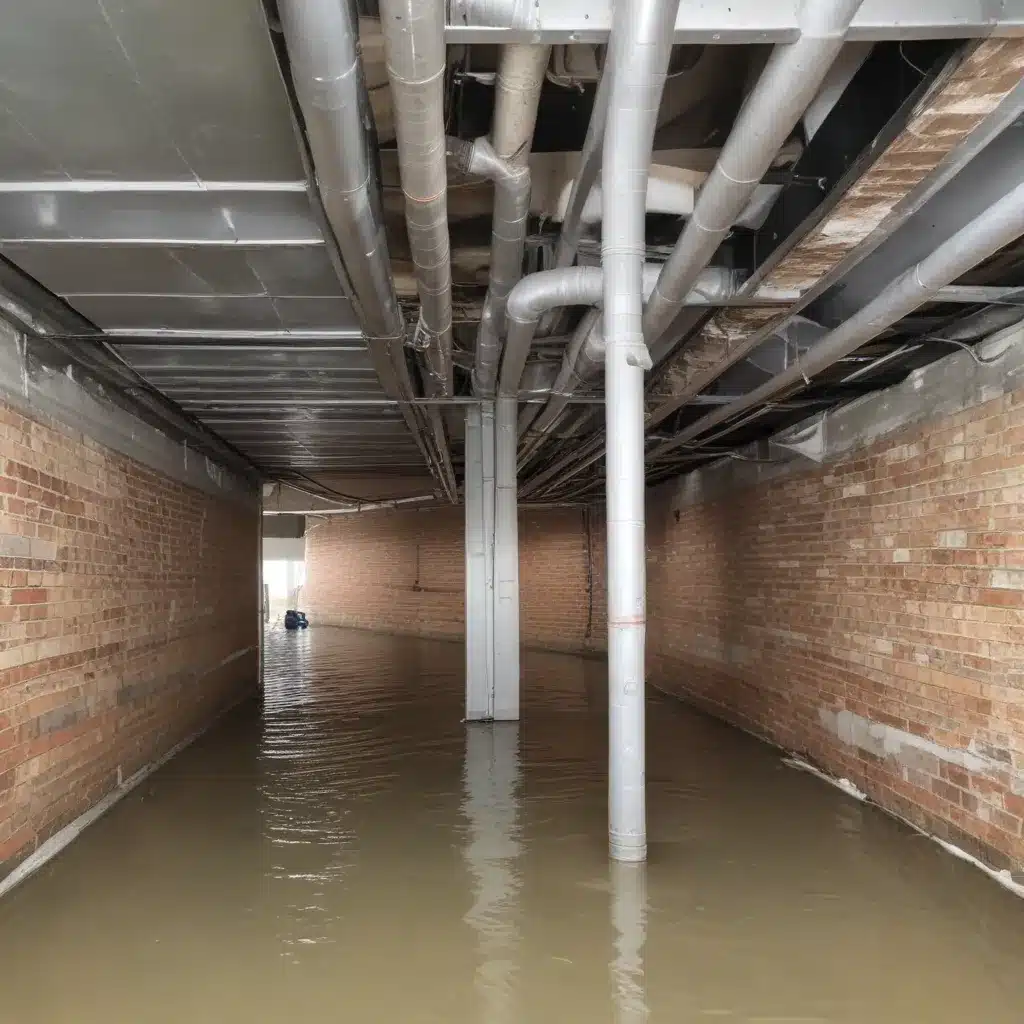
Air Quality and Water Damage: A Vital Connection
As an experienced water damage restoration specialist in the Orlando area, I’ve seen firsthand how seemingly unrelated factors can converge to create serious problems for homeowners and businesses. One connection that is often overlooked is the critical role that air duct maintenance plays in mitigating the effects of water intrusion and flooding.
It may come as a surprise, but the condition of your air ducts can significantly impact your property’s resilience against water damage. Proper air duct cleaning and maintenance not only ensures optimal indoor air quality, but it can also be a key factor in preventing the spread of mold and mildew following a flood or leak.
The Hidden Dangers of Neglected Air Ducts
When water infiltrates a building, whether from a broken pipe, a heavy storm, or a malfunctioning appliance, the air ducts can become a prime breeding ground for harmful microorganisms. Mold and mildew thrive in the moist, dark environments of ductwork, and once established, they can quickly spread throughout the entire HVAC system and into living and working spaces.
I’ve witnessed countless scenarios where a seemingly minor leak or flood led to major air quality issues, simply because the air ducts were not properly maintained. The porous materials used in ductwork, such as fiberglass insulation, can absorb and trap moisture, providing the perfect conditions for mold growth. And when the HVAC system kicks on, those spores can be circulated throughout the building, posing serious health risks to occupants.
Proactive Measures for Flood Resilience
One of the most important steps in preparing a property for potential water damage is ensuring that the air ducts are in optimal condition. This involves a thorough inspection and cleaning by a qualified HVAC professional, who can identify any areas of concern and recommend appropriate remediation strategies.
Regular air duct cleaning is critical, as it removes accumulated dust, debris, and contaminants that can become dislodged and spread during a flood event. By keeping the ductwork clean and well-maintained, you can minimize the risk of mold and mildew growth in the event of water intrusion.
Additionally, it’s important to consider the material and construction of your air ducts. Investing in moisture-resistant ductwork, such as those made from galvanized steel or aluminum, can significantly improve a building’s resilience against water damage. These materials are less prone to absorbing and trapping moisture, which reduces the likelihood of mold and mildew proliferation.
The Importance of Proper Ventilation
Proper ventilation is another crucial factor in maintaining air quality and preventing the spread of water-borne contaminants. Ensuring that your HVAC system is well-designed and functioning correctly can make all the difference in the world when dealing with the aftermath of a flood or leak.
Adequate air circulation and exchange is essential for drying out any affected areas and preventing the buildup of moisture that can lead to further problems. I’ve seen cases where poor ventilation has allowed mold and mildew to take hold, even in areas that were not directly impacted by the initial water intrusion.
Partnering with Experienced Professionals
When it comes to water damage restoration and indoor air quality, it’s essential to work with experienced professionals who understand the complex interplay between air ducts, HVAC systems, and flood resilience. At Orlando Water Damage Restoration, we have a team of experts who are well-versed in these critical connections.
Our comprehensive approach to water damage restoration includes a thorough assessment of the air duct system, along with targeted air quality testing and remediation strategies. We work closely with HVAC contractors to ensure that any necessary ductwork repairs or replacements are completed to the highest standards, ensuring the long-term health and safety of the building’s occupants.
Proactive Maintenance: The Key to Resilience
One of the most important lessons I’ve learned over the years is that proactive maintenance is the key to building resilience against water damage and its associated air quality issues. By staying ahead of potential problems and investing in regular air duct cleaning and HVAC system inspections, homeowners and business owners can significantly reduce the risk of costly and disruptive flood-related incidents.
It’s a simple fact that a well-maintained air duct system is better equipped to withstand the challenges posed by water intrusion. By keeping your ductwork clean, dry, and free of contaminants, you can breathe easier knowing that your property is better prepared to weather any storm or plumbing emergency.
Conclusion: A Holistic Approach to Water Damage Restoration
In the world of water damage restoration, it’s easy to get caught up in the immediate crisis at hand – the broken pipe, the flooded basement, the soaked carpets. But as an experienced professional, I’ve learned that true resilience lies in taking a more holistic approach, one that recognizes the critical interconnections between air quality, HVAC systems, and flood preparedness.
By partnering with Orlando Water Damage Restoration and prioritizing the health of your air ducts, you’re not just addressing the symptoms of water damage – you’re building a strong foundation for long-term protection and peace of mind. So breathe freely and stay dry, my friends, for a well-maintained home or business is one that is truly prepared to weather any storm.

